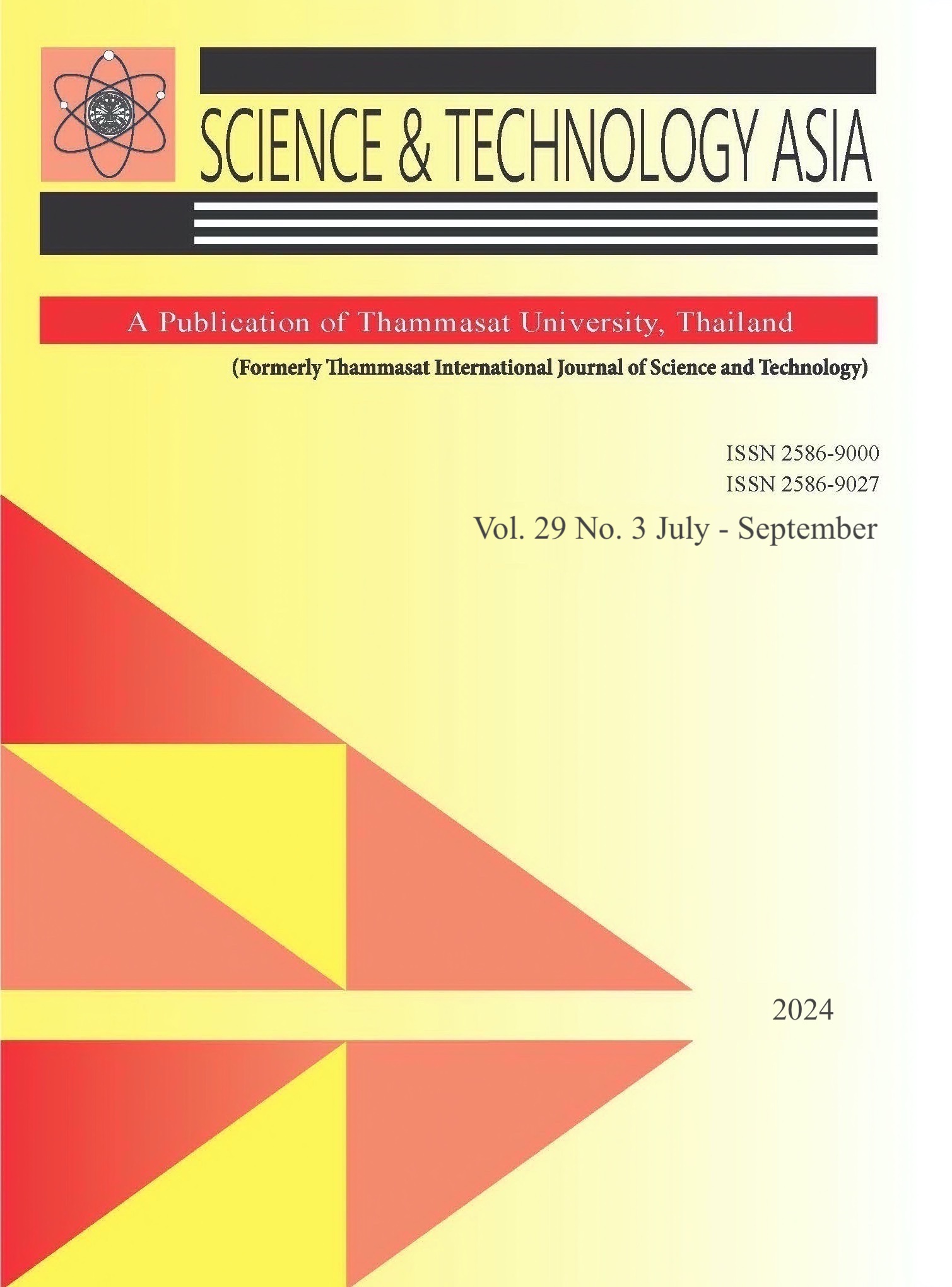Real-Time Classification Improvement of Indonesian Sign System Letters (SIBI) Using K-Nearest Neighbor Algorithm
Main Article Content
Abstract
Indonesian Sign Language (SIBI) is a vital means of communication for individuals with hearing impairments. The automatic translation from spoken language to SIBI presents challenges in accurately predicting sign characters. The information transfer process becomes biased when system predictions are incorrect. The current approach lacks accuracy due to data variations that may lead to character similarities. This research addresses this issue with an improved method incorporating linguistic features and contextual information. A novel approach is introduced to enhance SIBI character predictions using the K-Nearest Neighbor (K-NN) algorithm. The K-NN algorithm is employed to predict the most suitable SIBI character based on the similarity of linguistic features between input speech and existing data. This research compares distance metrics such as Euclidean, Manhattan, and Chebyshev to determine the optimal number of nearest neighbors (K) for achieving the most accurate outcomes. Experimental results employing 200 data points per label yielded satisfactory average predictions for each label. The experiments underscore the effectiveness of the K-NN model utilizing the Chebyshev distance metric with K=7 on the 200 data labels, as it provided excellent probability results for each label.
Article Details

This work is licensed under a Creative Commons Attribution-NonCommercial-NoDerivatives 4.0 International License.
References
L. L. Wijaya, Bahasa Isyarat Indonesia sebagai Panduan Kehidupan bagi Tuli, Feb. 2019.
D. Maryani and R. R. E. Nainggolan, Pemberdayaan Masyarakat. Deepublish, Oct. 2019.
D. R. R. M.Pd, Sistem Komunikasi Anak Dengan Hambatan Pendengaran. Deepublish, Aug. 2021.
R. B. Widodo, Machine Learning Metode k-Nearest NeightBors Klasifikasi Angka Bahasa Isyarat. Media Nusa Creative (MNC Publishing), Aug. 2022.
F. Mutia, AKSES, INFORMASI DAN DISABILITAS. Airlangga University Press, Jul. 2023.
Y. M.Kom, ST, Data Mining. CV Jejak (Jejak Publisher), Dec. 2022.
P. Yugopuspito, I. M. Murwantara, and J. Sean, Mobile Sign Language Recognition for Bahasa Indonesia using Convolutional Neural Network, in Proceedings of the 16th International Conference on Advances in Mobile Computing and Multimedia. Yogyakarta Indonesia: ACM, 2018:84-91.
V. R. Tiwari, Developments in K.K.K.D. Tree and KNN Searches, International Journal of Computer Applications, 2023;185(17):17-23.
R. Syafaruddin, A. A. Ilham, and I. Nurtanio, Indonesian Sign Language Letter Interpreter Application Using Leap Motion Control based on Naive Bayes Classifier, IOP Conference Series: Materials Science and Engineering, 2019;676(1):012012.
N. Afifah and H. Nughroho, Deteksi Fitur Huruf Sistem Isyarat Bahasa Indonesia (SIBI) Menggunakan Metode Chain Code, Des 2022. 56.
H. M. Putri and W. Fuadi, Pendeteksian Bahasa Isyarat Indonesia Secara Real-Time Menggunakan Long Short-Term Memory (LSTM), 2021.
I. Suyudi, S. Sudadio, and S. Suherman, Pengenalan Bahasa Isyarat Indonesia menggunakan Mediapipe dengan Model Random Forest dan Multinomial Logistic Regression (Introduction to Indonesian Sign Language Using Mediapipe With Random Forest Models and Multinomial Logistic Regression), 2022;1(1):2022.
M. E. Al Rivan, H. Irsyad, K. Kevin, and A. T. Narta, Implementasi LDA pada fitur HOG untuk Klasifikasi ASL Menggunakan K-NN, JATISI (Jurnal Teknik Informatika dan Sistem Informasi), 2020;7(2):214-25.
N. A. Hasma, F. Arnia, R. Muharar, and M. K. Muchamad, Pengenalan Gerakan Isyarat Bahasa Indonesia Menggunakan Algoritma SURF dan K- Nearest Neighbor, 2022;7(1):50-4.
S. V. Sonekar, H. Dhoke, V. Mate, S. Dhewle, and Marshneel Patil, Real-Time Sign Language Identification using KNN: A Machine Learning Approach, IEEE 11th International Conference on Emerging Trends in Engineering & Technology-Signal and Information Processing (ICETET-SIP), Jun. 2023.
R. Dullo, Y. Kamble, V. Suryawanshi, S. Mishra, and P. Patilm, A Study on Real-Time Sign Language Identification Using KNN, Madya Bharti, Humanities and Social Sciences, 2024;83(22):111-20.
7 LCD Display Joy-IT. Available:https://joy-it.net/en/products/RB-LCD-7-2.
T. Cover and P. Hart, Nearest neighbor pattern classification, in IEEE Transactions on Information Theory, 1967;13(1):21-7.
Devroye, Luc; Gyorfi, Laszlo; Lugosi, Gabor (1996). A probabilistic theory of pattern recognition. Springer. ISBN 978-0-3879-4618-4.
W. Budiharto, Machine learning dan computational intelligence. Yogyakarta: Penerbit ANDI.
C. Fu and J. Yang, Granular Classification for Imbalanced Datasets: A Minkowski Distance-Based Method, Algorithms, 2021;14(2):54.
S. J. Russell, P. Norvig, and E. Davis, Artificial Intelligence: A Modern Approach. Prentice Hall, 2010.
I. Iswanto, T. Tulus, and P. Sihombing, Comparison of Distance Models on K-Nearest Neighbor Algorithm in Stroke Disease Detection, Applied Technology and Computing Science Journal, 2021;4(1):63-8.
Y. Heryadi and T. Wahyono, Machine Learning (Konsep dan Implementasi). Yogyakarta: Gava Media, 2020. 57.
U. Fadlilah, A. K. Mahamad, and B. Handaga, The Development of Android for Indonesian Sign Language Using Tensorflow Lite and CNN: An Initial Study, Journal of Physics: Conference Series, 2021;1858(1):012085.
S. Nur Budiman, S. Lestanti, S. Marselius Evvandri, and R. Kartika Putri, Pengenalan Gestur Gerakan Jari Untuk Mengontrol Volume Di Komputer Menggunakan Library Opencv dan Mediapipe, Antivirus: Jurnal Ilmiah Teknik Informatika, 2022;16(2):223-32.
Suharjito, N. Thiracitta, and H. Gunawan, SIBI Sign Language Recognition Using Convolutional Neural Network Combined with Transfer Learning and nontrainable Parameters, Procedia Computer Science, 2021;179:72-80.
F. Zhang, V. Bazarevsky, A. Vakunov, A. Tkachenka, G. Sung, C.-L. Chang, and M. Grundmann, MediaPipe Hands: On-device Real-time 58 Hand Tracking, Jun. 2020, Available: http://arxiv.org/abs/2006.10214.
M. Nishom, Perbandingan Akurasi Euclidean Distance, Minkowski Distance, dan Manhattan Distance pada Algoritma K-Means Clustering berbasis Chi-Square, Jurnal Informatika: Jurnal Pengembangan IT, 2019;4(1):20-4.


